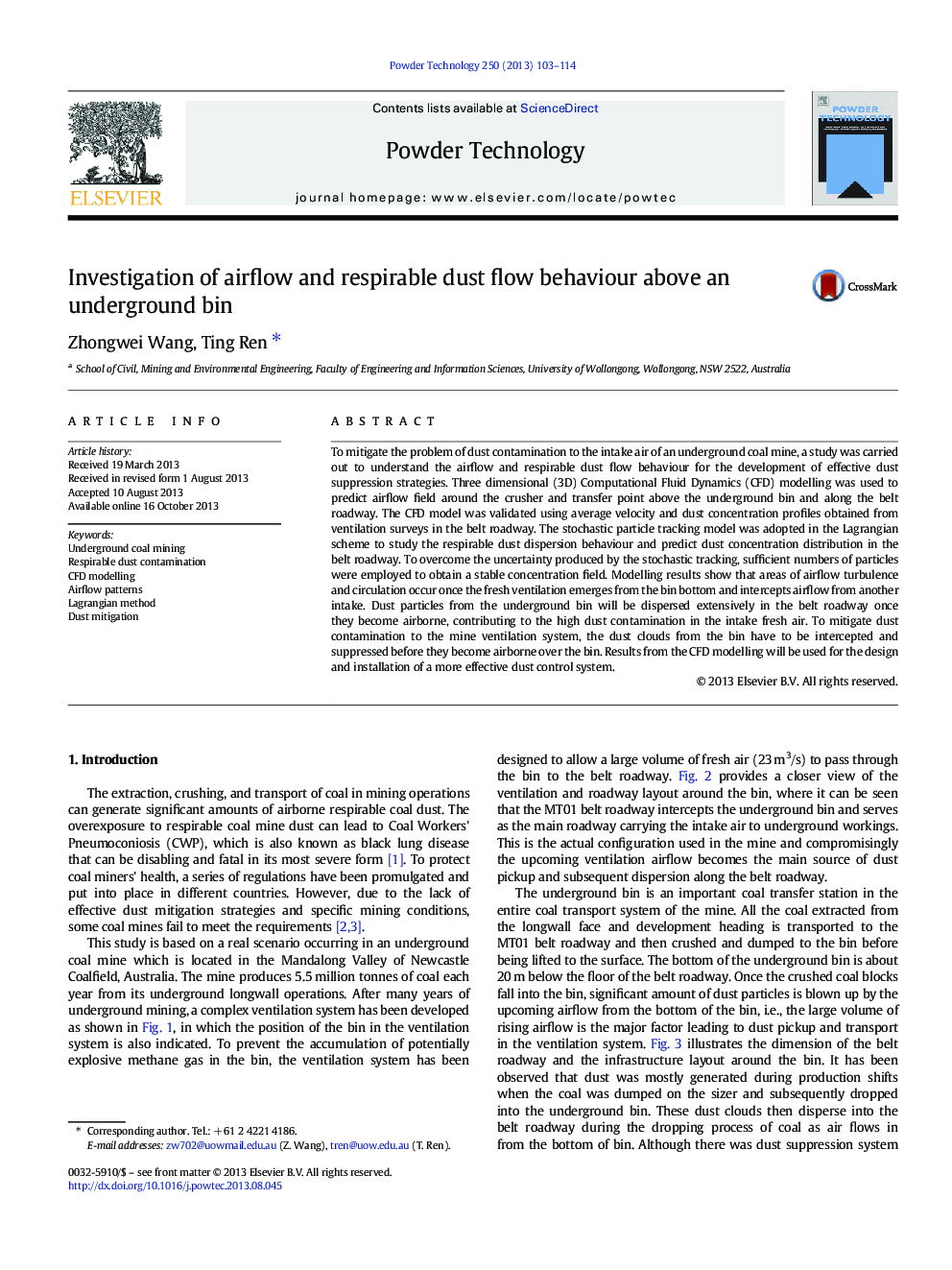| کد مقاله | کد نشریه | سال انتشار | مقاله انگلیسی | نسخه تمام متن |
|---|---|---|---|---|
| 236116 | 465659 | 2013 | 12 صفحه PDF | دانلود رایگان |

• CFD modelling of ventilation and dust dispersion patterns from an underground bin.
• The Lagrangian method and stochastic tracking to study dust flow behaviour.
• Modelling results for the design of a more effective dust mitigation system.
To mitigate the problem of dust contamination to the intake air of an underground coal mine, a study was carried out to understand the airflow and respirable dust flow behaviour for the development of effective dust suppression strategies. Three dimensional (3D) Computational Fluid Dynamics (CFD) modelling was used to predict airflow field around the crusher and transfer point above the underground bin and along the belt roadway. The CFD model was validated using average velocity and dust concentration profiles obtained from ventilation surveys in the belt roadway. The stochastic particle tracking model was adopted in the Lagrangian scheme to study the respirable dust dispersion behaviour and predict dust concentration distribution in the belt roadway. To overcome the uncertainty produced by the stochastic tracking, sufficient numbers of particles were employed to obtain a stable concentration field. Modelling results show that areas of airflow turbulence and circulation occur once the fresh ventilation emerges from the bin bottom and intercepts airflow from another intake. Dust particles from the underground bin will be dispersed extensively in the belt roadway once they become airborne, contributing to the high dust contamination in the intake fresh air. To mitigate dust contamination to the mine ventilation system, the dust clouds from the bin have to be intercepted and suppressed before they become airborne over the bin. Results from the CFD modelling will be used for the design and installation of a more effective dust control system.
Three dimensional CFD model was generated to understand dust contamination to mine intake air, through which a detailed airflow field was predicted and validated using field survey data. The model was further used to investigate the dispersion of respirable dust particles using the particle tracking method. Model results indicated that the dust clouds from the bin have to be intercepted and suppressed before they become airborne over the bin.Figure optionsDownload as PowerPoint slide
Journal: Powder Technology - Volume 250, December 2013, Pages 103–114